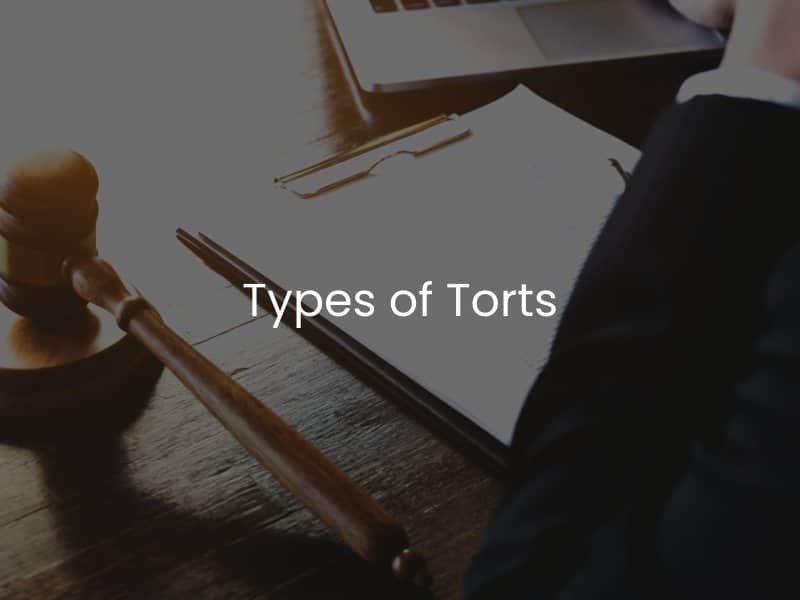Types of Torts
At its most basic definition, a “tort” is legally defined as a type of wrongdoing, breach of duty, or misconduct. Under civil liability rules, if a person’s tort causes somebody else harm, the person guilty of the tort will then owe the victim some sort of financial compensation. It is important to know that there are different types of torts in California. Here, we will run through a brief list of the most common torts that result in lawsuits in this state.

Understanding a Tort Cases
Tort cases arise when one individual files a civil suit against another party for allegedly causing damages in question. In a successful tort claims case, it will be shown that one party (the defendant) is guilty of causing another party’s (the plaintiff) injuries and losses. In these situations, a defendant will have to pay for committing a tort that caused damages.
There are various parties that can file tort claims in civil court in California. In most situations, these are individuals filing a lawsuit against another individual, business, or entity. For wrongful death claims, the family members of the deceased and file civil wrongful death tort claims.
Negligence and Tort Claims
Negligence is the most common reason for a civil tort claim to arrive in California. These types of claim allege the fault of another party based on four elements of negligence:
Duty
This refers to a defendant’s obligation to uphold certain standards of care to keep others from sustaining an injury.
Breach
A breach of duty can occur anytime the defendant’s careless or negligence causes harm to another.
Causation
It is necessary to establish a connection between the breach of duty and the plaintiff’s damages.
Damages
These are considered any losses sustained by the victim, such as medical bills, property damage, pain and suffering losses, etc.
Civil liability is not the same thing as criminal cases. In a tort claim is based on negligence, a person can be held financially accountable for injuring another even if they did not mean to cause the accident or injury. Some of the most common negligence tort claims revolve around vehicle accidents, slip and fall incidents, medical malpractice, pedestrian accidents, etc.
Strict Liability Tort Claims
Claims based on strict liability are going to be different than claims based on negligence. For a claim based on ordinary negligence, an injury victim has to show that another person breached their duty of care and caused the injuries. However, for claims based on strict liability, injury victims may not need to prove negligence in order to obtain compensation.
The theory of strict liability holds that an individual or entity will be held financially responsible for damages to another party if they are not negligent in certain situations. Specific areas of law allow for strict liability, most commonly for:
- Defective product claims
- Dog bite incidents
- Dangerous activities or assumption of risk claims
Intentional Tort Claims
Intentional torts can arise anytime a person is injured due to the wrongdoing or criminal actions of a defendant. In other words, the defendant knowingly, purposely, consciously, or maliciously caused harm to an individual. Some of the most common intentional tort claims arise due to assault, battery, burglary, homicide, sexual assault, and fraud cases.
Intentional tort claims are not the same thing as a criminal charge that a person may face for the same exact incident. Law enforcement officials and prosecutors are responsible for filing and handling criminal claims, whereas an individual injured as a result of a person’s actions is responsible for filing an intentional tort claim in civil court.